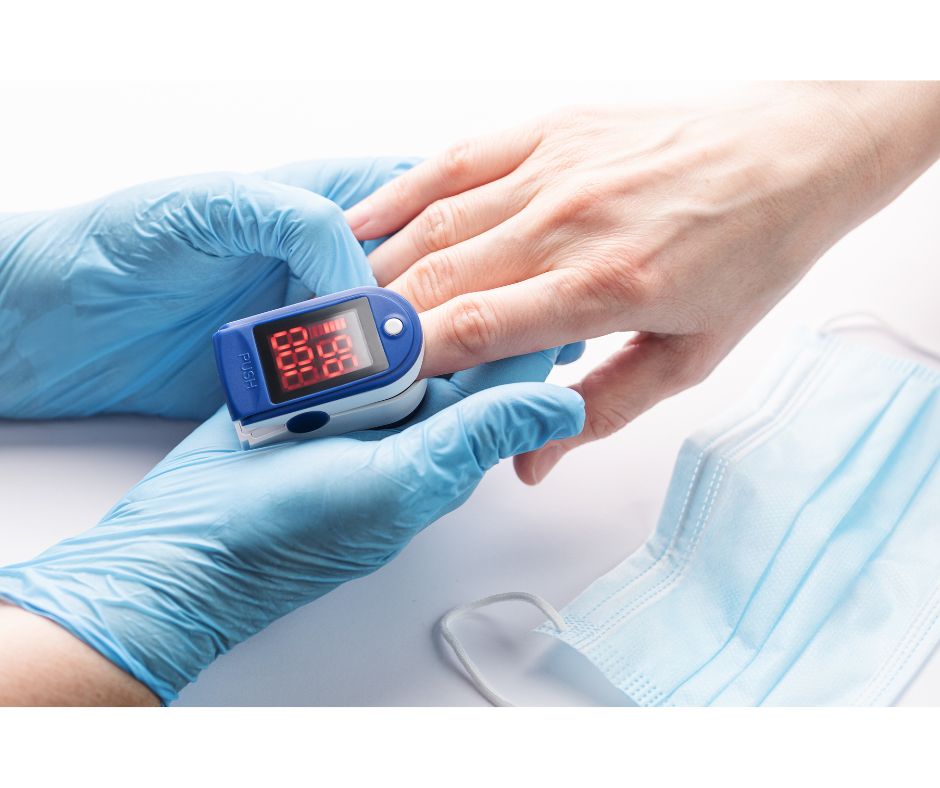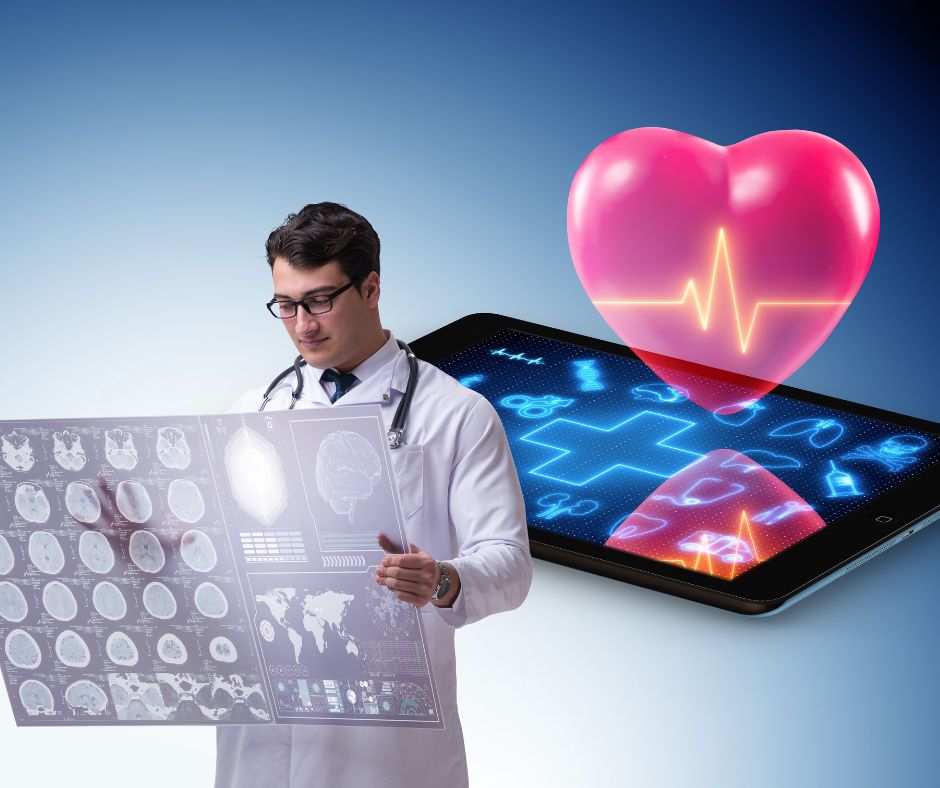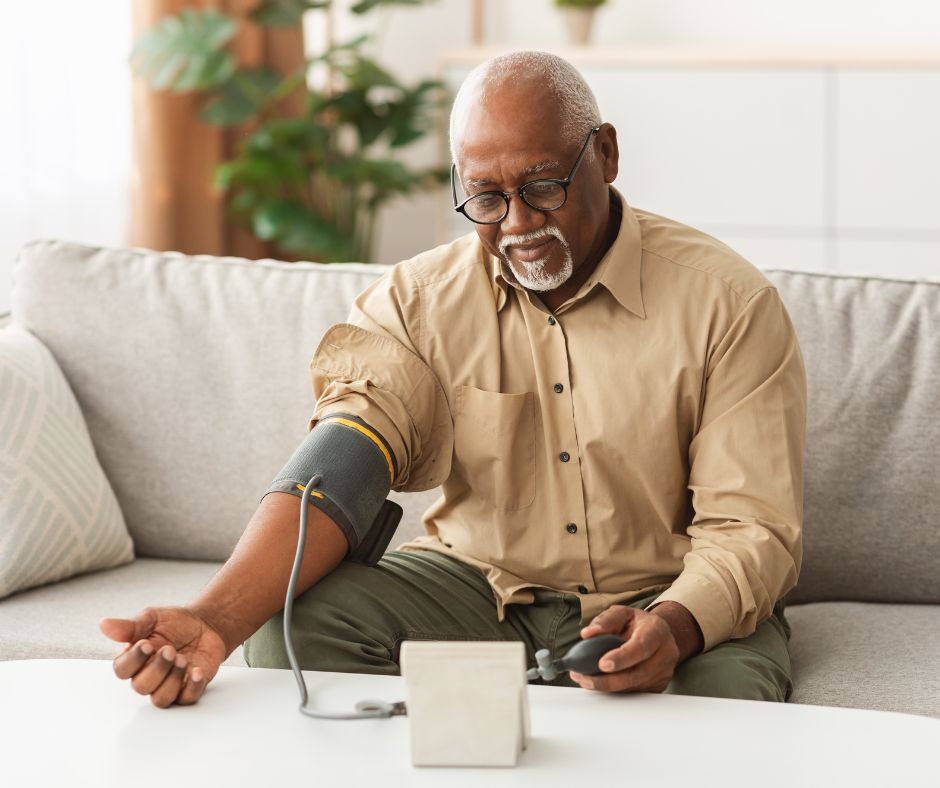As healthcare costs continue to go up, digital health platforms are emerging as powerful cost-cutting tools. The global digital health market size was estimated at $240.9 billion in 2023 and is projected to grow at a compound annual growth (CAGR) of 21.9% from 2024 to 2030.
These platforms are not just fancy apps or websites. From telehealth to AI-powered diagnostics, digital health applications are changing healthcare for the better.
How do these platforms trim the fat from our bloated healthcare system? Let’s explore the ways digital health can make healthcare more affordable for everyone.
Contents
Telemedicine: Healthcare at Your Fingertips
Telemedicine brings healthcare right to your home, office, or wherever you are. It’s like having a doctor in your pocket! But how does this convenience translate to cost savings?

Virtual doctor visits reduce travel and waiting room costs
A study published in the Journal of Medical Internet Research found that telehealth visits saved patients an average of 100 minutes of travel time and $50 in travel costs per visit (Snoswell et al., 2020).
Think about the last time you went to the doctor. How much time did you spend traveling and sitting in the waiting room? With telehealth, those time and money costs disappear.
Fewer ER visits
How often have you wondered if that late-night stomach ache was worth a trip to the ER? Telehealth tools like AI chatbots can help you make that decision without leaving home.
Cost savings for both patients and healthcare providers
It’s not just patients who save money. Healthcare providers benefit too. Telehealth services have been found to reduce healthcare costs for providers and patients. Even better, many insurers now have an allowance to cover the cost of certain telehealth visits.
Preventive Care: Stopping Problems Before They Start
Have you ever heard the saying “an ounce of prevention is worth a pound of cure”? Digital health platforms are making this old adage more relevant than ever.
How digital platforms promote healthy habits

From step counters to diet trackers, digital health apps are helping us stay healthier. But do they really make a difference? A study by Ernsting et al. (2017) found that users of health and fitness apps were 34% more likely to meet physical activity guidelines compared to non-users.
Wearable devices and their impact on early detection

Smartwatches surpass the practical use of telling time–they’re becoming powerful health monitors. For example, Apple Watch’s ECG feature can detect atrial fibrillation with 98% accuracy, potentially preventing strokes and saving lives (Perez et al., 2019).
How AI and big data can predict health risks and reduce costs
Big Data Analytics in healthcare uses AI, machine learning and deep learning tools to help doctors find the best treatments for each patient, which can reduce waste. This lets doctors predict health problems and start treatments early, which can save lives. This could change how common certain diseases are and save money on healthcare (Batko & Ślęzak, 2022).
Cost savings through prevention vs. treatment
Prevention isn’t just better for our health—it’s better for our wallets too. The Centers for Disease Control and Prevention estimates that chronic diseases that are avoidable through preventive care account for 75% of the nation’s healthcare spending.
Streamlined Administrative Processes
Paperwork is no one’s favorite part of healthcare. Digital platforms are making administrative tasks faster, easier, and more cost-effective.
Automated appointment scheduling and reminders
Have you ever forgotten a doctor’s appointment? Digital reminders can help.

Ulloa-Pérez et al. (2022) found that sending an extra text reminder for high-risk appointments reduced no-shows in primary care and mental health offices, and same-day cancellations in primary care offices.
Targeting reminders using risk prediction models (predictive analytics) can efficiently use healthcare resources, potentially preventing hundreds of missed visits monthly. This approach saves costs compared to messaging all patients, though implementing the risk model has some costs.
Digital health records reduce paperwork and administrative errors

Remember when doctors used to write prescriptions by hand? Digital health records make all kinds of admin work more efficient. A study in the Journal of the American Medical Informatics Association found that electronic health records with AI can reduce medication and billing errors.
Cost savings through improved workflow and resource allocation
Efficient workflows mean better care at lower costs. A study in the Journal of Medical Internet Research found that digital health platforms improved hospital workflow efficiency by 25%, leading to annual cost savings of $1.2 million for a mid-sized hospital (Luo et al., 2019).

Data-Driven Insights for Better Decision Making
In the age of big data, information is power. Healthcare is no exception. With all this digital information, doctors can make smarter choices about your health.
How big data analytics improve treatment plans
A study in the Journal of Big Data found that big data analytics improved treatment efficacy by 30% and reduced treatment costs by 20% (Dash et al., 2019).
Cost savings from shorter and fewer hospital stays

Have you ever wondered how hospitals decide how many beds they need? Predictive analytics is the answer. It can reduce hospital bed shortages and decrease operational costs.
Hospital stays are expensive, but RPM can help shorten them. RPM allows patients to be discharged an average of 2 days earlier, resulting in cost savings of $7,000 per patient.
Personalized medicine and its impact on cost reduction
One size doesn’t fit all in healthcare. Targeted treatments are more effective and cost-effective.
- Personalized treatment plans based on genetic data improve treatment efficacy and reduce adverse drug reactions (ADRs).
- The Personalized Medicine Coalition estimated that personalized medicine approaches could save the U.S. healthcare system $25 billion annually.

Remote Patient Monitoring: Reducing Hospital Stays
Sometimes, the best hospital care happens outside the hospital.
Remote patient monitoring (RPM) allows health providers to keep an eye on patients without keeping them in the hospital. From smart pills to wearable sensors, remote monitoring technologies are diverse and growing.
Impact on reducing hospital readmissions
Nobody likes going back to the hospital. Remote monitoring can help prevent that. A study in the New England Journal of Medicine found that remote monitoring reduced hospital readmissions for heart failure patients by 50% (Perez et al., 2019).
Management of chronic conditions from home

Chronic conditions are a major driver of healthcare costs. Remote monitoring can help manage these conditions more effectively.
A 2024 study showed that telehealth reduces healthcare costs by cutting down on hospital visits, travel time, and missed work, especially for managing chronic conditions. This benefits both patients and healthcare systems financially (Prasad Vudathaneni et al., 2024).
Increasing Access to Specialized Care
Specialized care can be hard to access, especially in rural areas. Digital health isn’t just about general care – it’s also bringing expert help to more people.
Telehealth solutions for rural and underserved areas
Rural healthcare access is a major challenge. Telehealth can help bridge that gap. A study in Health Affairs found that telehealth increased access to specialty care in rural areas by 54%.
Telehealth also faces challenges like high setup costs and outdated payment models, especially in rural areas. Its success depends on cost distribution, clinical outcomes, and indirect savings. Hospitals need funding and strategies to reach underserved groups and ensure fair access to telehealth (Anawade et al., 2024).
Virtual second opinions and their impact on treatment decisions

Getting a second opinion can be life-changing. Virtual platforms make it easier than ever. Virtual second opinions can change the diagnosis or treatment plan in over one-third of cases, potentially avoiding unnecessary procedures and costs.
Conclusion
Digital health platforms are powerful allies to counteract rising healthcare costs. By leveraging technology for prevention, efficiency, and data-driven insights, these platforms are making healthcare more accessible and affordable. From applications like telehealth reducing unnecessary ER visits to catching illnesses early with AI-powered diagnostics, the potential for cost savings is huge.
As patients, we can embrace these digital tools to take control of our health and potentially lower our healthcare expenses. For healthcare providers, adopting these platforms could lead to more efficient operations and better patient outcomes.
What do you think about these digital health innovations? Have you used any of these technologies in your own healthcare journey?
References
Anawade, P. A., Sharma, D., & Gahane, S. (2024). A Comprehensive Review on Exploring the Impact of Telemedicine on Healthcare Accessibility. Cureus, 16(3). doi.org/10.7759/cureus.55996
Batko, K., & Ślęzak, A. (2022). The use of Big Data Analytics in healthcare. Journal of Big Data, 9(1). doi.org/10.1186/s40537-021-00553-4
Centers for Disease Control and Prevention. (2021). Chronic diseases in America. Retrieved from https://www.cdc.gov/chronicdisease/resources/infographic/chronic-diseases.htm
Dash, S., Shakyawar, S. K., Sharma, M., & Kaushik, S. (2019). Big data in healthcare: Management, analysis and future prospects. Journal of Big Data, 6(1), 1-25. doi.org/10.1186/s40537-019-0217-0
Ernsting, C., Dombrowski, S. U., Oedekoven, M., & Kanzler, M. (2017). Using smartphones and health apps to change and manage health behaviors: A population-based survey. Journal of Medical Internet Research, 19(4), e101.
Grand View Research. (2024). Digital Health Market Size, Share & Trends Analysis Report By Technology (Healthcare Analytics, mHealth), By Component (Hardware, Software, Services), By Application, By End-use, By Region, And Segment Forecasts, 2024 – 2030. Retrieved from https://www.grandviewresearch.com/industry-analysis/digital-health-market
Luo, L., Li, J., Liang, X., Zhang, J., & Guo, Y. (2019). A cost-effectiveness analysis of a mobile-based care model for community-dwelling elderly individuals. Journal of Medical Internet Research, 21(5), e13563.
Perez, M. V., Mahaffey, K. W., Hedlin, H., Rumsfeld, J. S., Garcia, A., Ferris, T., Balasubramanian, V., Russo, A. M., Rajmane, A., Cheung, L., Hung, G., Lee, J., Kowey, P., Talati, N., Nag, D., Gummidipundi, S. E., Beatty, A., Hills, M. T., Desai, S., … Turakhia, M. P. (2019). Large-scale assessment of a smartwatch to identify atrial fibrillation. New England Journal of Medicine, 381(20), 1909-1917.
Personalized Medicine Coalition. (2020). The personalized medicine report: Opportunity, challenges, and the future. Retrieved from http://www.personalizedmedicinecoalition.org/Userfiles/PMC-Corporate/file/The-Personalized-Medicine-Report1.pdf
Prasad Vudathaneni, V. K., Lanke, R. B., Mudaliyar, M. C., Movva, K. V., Kalluri, L. M., & Boyapati, R. (2024). The Impact of Telemedicine and Remote Patient Monitoring on Healthcare Delivery: A Comprehensive Evaluation. Cureus, 16(3). doi.org/10.7759/cureus.55534
Snoswell, C. L., Taylor, M. L., Comans, T. A., Smith, A. C., Gray, L. C., & Caffery, L. J. (2020). Determining if telehealth can reduce health system costs: Scoping review. Journal of Medical Internet Research, 22(10), e17298.
Ulloa-Pérez, E., Blasi, P. R., Westbrook, E. O., Lozano, P. , Coleman, K. F., & Coley, R. Y. (2022). Pragmatic Randomized Study of Targeted Text Message reminders to Reduce Missed Clinic Visits. The Permanente Journal, 26(1), doi/10.7812/TPP/21.078
Winstead, E. (2023). Telehealth Can Save People with Cancer Time, Travel, and Money. National Cancer Institute. Retrieved from https://www.cancer.gov/news-events/cancer-currents-blog/2023/telehealth-cancer-care-saves-time-money
































